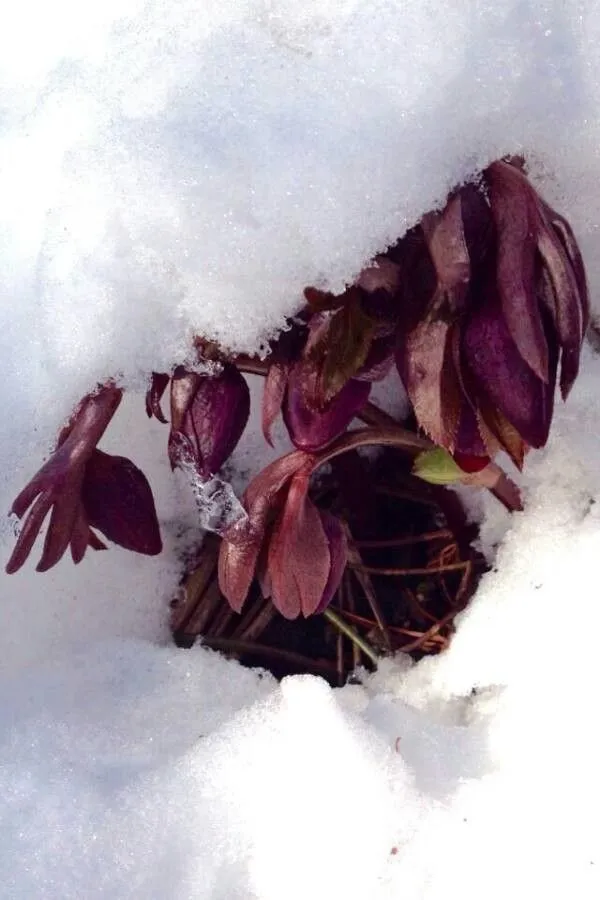
Author: L.
Bibliography: Sp. Pl.: 558 (1753)
Year: 1753
Status: accepted
Rank: species
Genus: Helleborus
Vegetable: Unknown
Observations: C. & SC. Europe
The Green Hellebore, known scientifically as Helleborus viridis, is a captivating and ancient plant belonging to the Ranunculaceae family. This species, formally described in the 18th century reference work “Species Plantarum” published in 1753, has been a subject of botanical interest for centuries. The esteemed botanist Carl Linnaeus, often abbreviated as “L.” in botanical texts, was the first to give this plant its scientific identity.
Native to the heartland of Europe, the Green Hellebore thrives predominantly in central and southern regions, where it graces woodlands and meadows with its unique and striking appearance. The plant’s robust foliage, characterized by its vibrant green hue, emerges in clumps, creating a lush understory in its natural habitat. The leaves are glossy and deeply divided, contributing to the plant’s ornamental appeal.
One of the most distinctive features of Helleborus viridis is its flowers, which appear in late winter to early spring. These blossoms are composed of five striking green sepals that form a star-like arrangement, occasionally showing subtle tinges of purple, particularly around the edges. The sepals encircle a central cluster of tubular nectaries and numerous stamens that give the flower a whimsical and intricate look.
Green Hellebore prefers shaded or semi-shaded locations, often under the canopy of trees or large shrubs. It is well-suited to the temperate climate of its native range, flourishing in well-drained, rich soils that retain moisture without becoming waterlogged. Its resilience and preference for shaded environments make it a favored choice for gardeners seeking to add color and interest to shaded areas of their gardens.
Despite its beauty, it is important to handle the Green Hellebore with care. Like many members of the Ranunculaceae family, all parts of the plant are toxic if ingested and can cause skin irritation upon contact. Therefore, it is advisable to wear gloves when handling the plant and ensure that it is not accessible to small children or pets.
In summary, the Green Hellebore, Helleborus viridis, is a plant of considerable historical and horticultural interest. Its vibrant green flowers and robust foliage bring early spring color to shaded gardens, while its European origins and connection to the pioneering work of Linnaeus add to its botanical significance. When admired from a safe distance, it is a remarkable addition to any garden, be it for its historical value or its striking aesthetic.
Pol: ciemiernik zielony
Eng: green hellebore
Dan: grøn julerose, grøn nyserod
Deu: grüne nieswurz, gewöhnliche grüne nieswurz
Fra: ellébore vert
Swe: grön julros, grön prustrot
Nld: wrangwortel
Hun: zöld hunyor
Cym: crafanc yr arth, crafanc-yr-arth werdd, pelydr gwyrdd, troed yr arth
En: Green hellebore, Bear’s Foot, Bear’s-foot
Ar: خربق أخضر
Hy: Ղանձլամեր կանաչ
Eu: Otsababa eme
Bg: Зелен кукуряк
Ca: El·lèbor verd
Kw: Kraban an ors glas
Cs: Čemeřice zelená
Da: Grøn nyserod, Grøn julerose
Nl: Wrangwortel
Fi: Viherjouluruusu
Fr: Hellébore vert, Ellébore vert, Herbe à la bosse, Herbe à sétons, Herbe de saint Antoine
De: Gewöhnliche grüne Nieswurz, Grüne Christwurz, Grüne Nieswurz
Hu: Zöld hunyor
It: Elleboro verde
Pl: Ciemiernik zielony
Ru: Морозник зелёный
Sk: Čemernica zelená, Čemerica zelená
Es: Eléboro verde, Heléboro verde
Sv: Grön julros, Grön prustrot
Tr: Yeşil çöpleme
Wa: Yebe di feu
Cy: Crafanc-yr-arth Werdd, Crafanc yr Arth, Pelydr Gwyrdd, Troed yr Arth
Taken Dec 24, 2017 by Dieter Wagner (cc-by-sa)
Taken Mar 10, 2019 by Dieter Wagner (cc-by-sa)
Taken Mar 10, 2019 by Dieter Wagner (cc-by-sa)
Taken Dec 24, 2017 by Fejul Xeto (cc-by-sa)
Taken Mar 17, 2019 by Giusy Pizzo (cc-by-sa)
Taken May 3, 2018 by Dieter Wagner (cc-by-sa)
Taken Mar 4, 2018 by Pep Secem (cc-by-sa)
Taken Mar 10, 2019 by Dieter Wagner (cc-by-sa)
Taken Mar 5, 2019 by Dieter Wagner (cc-by-sa)
Taken Mar 10, 2019 by Dieter Wagner (cc-by-sa)
Taken Jun 5, 2021 by Emanuele Santarelli (cc-by-sa)
Taken May 3, 2018 by Dieter Wagner (cc-by-sa)
Taken May 3, 2018 by Dieter Wagner (cc-by-sa)
Taken Feb 26, 2018 by Dieter Wagner (cc-by-sa)
Taken Mar 5, 2019 by Dieter Wagner (cc-by-sa)
Taken Mar 3, 2018 by Dieter Wagner (cc-by-sa)
Taken Dec 24, 2017 by Dieter Wagner (cc-by-sa)
Taken Mar 3, 2018 by Dieter Wagner (cc-by-sa)
Taken Dec 24, 2017 by Fejul Xeto (cc-by-sa)
Taken Feb 28, 2018 by Dieter Wagner (cc-by-sa)
Taken Mar 21, 2022 by Sylvain Piry (cc-by-sa)
Taken Feb 11, 2018 by Dieter Wagner (cc-by-sa)
Taken Feb 11, 2018 by Dieter Wagner (cc-by-sa)
Taken Feb 11, 2018 by Dieter Wagner (cc-by-sa)
Taken Feb 11, 2018 by Dieter Wagner (cc-by-sa)
Taken May 10, 2021 by Dakota Huddleston (cc-by-sa)
Taken Mar 13, 2021 by Zanin Cecilia (cc-by-sa)
Taken Aug 7, 2022 by Alessio Monacchia (cc-by-sa)
Taken May 22, 2022 by BEK B (cc-by-sa)
Taken Mar 2, 2021 by Matthias Fial (cc-by-sa)
© copyright of the Board of Trustees of the Royal Botanic Gardens, Kew.
Family: Myrtaceae Author: (F.Muell.) K.D.Hill & L.A.S.Johnson Bibliography: Telopea 6: 402 (1995) Year: 1995 Status:…
Family: Rubiaceae Author: Pierre ex A.Froehner Bibliography: Notizbl. Bot. Gart. Berlin-Dahlem 1: 237 (1897) Year:…
Family: Sapindaceae Author: Koidz. Bibliography: J. Coll. Sci. Imp. Univ. Tokyo 32(1): 38 (1911) Year:…
Family: Asteraceae Author: A.Gray Bibliography: Pacif. Railr. Rep.: 107 (1857) Year: 1857 Status: accepted Rank:…
Family: Fabaceae Author: Medik. Bibliography: Vorles. Churpfälz. Phys.-Ökon. Ges. 2: 398 (1787) Year: 1787 Status:…
Family: Aspleniaceae Author: (Cav.) Alston Bibliography: Bull. Misc. Inform. Kew 1932: 309 (1932) Year: 1932…